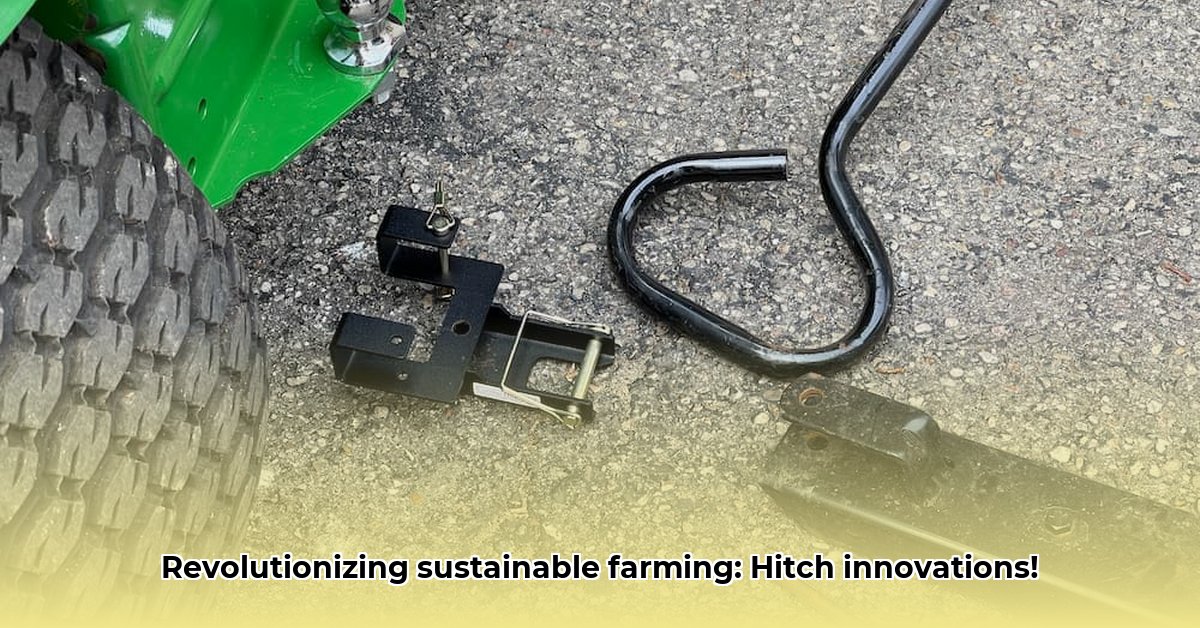
Garden Tractor Hitch Innovations: A Greener Future for Farming
Garden tractor hitches, often viewed as simple tools for yard work, hold immense potential for revolutionizing sustainable agriculture. This article explores how innovative hitch designs and attachments can enhance efficiency and minimize environmental impact on smaller farms. We’ll examine key areas for improvement and explore the collaborative efforts needed to transform this seemingly mundane piece of equipment into a powerful tool for a greener future. Sustainable farming practices, such as precision agriculture and reduced tillage, are becoming increasingly important, and innovative garden tractor hitches can play a vital role in their widespread adoption. For more information on hitch types, check out this helpful resource.
Reimagining the Humble Garden Tractor Hitch: Beyond Mowing Lawns
Currently, most garden tractor hitches are designed for tasks like mowing and basic tilling. However, their potential extends far beyond these simple applications. By creatively adapting existing technology and integrating innovative designs, we can leverage these hitches to significantly improve the sustainability of smaller-scale farming operations. This isn't about replacing large-scale machinery but about optimizing existing tools for environmentally friendly practices. How can we unlock the full potential of these tools for precision agriculture? The answer lies in focusing on several key areas.
Unlocking the Potential: Key Areas for Improvement
To truly revolutionize garden tractor hitches for sustainable agriculture, several key areas demand attention:
Precision Application: Imagine a hitch equipped with sensors and actuators for precise dispensing of water, fertilizers, and even biopesticides. This precision application minimizes waste, reduces environmental impact, and optimizes resource use. This targeted approach can dramatically reduce chemical runoff and improve fertilizer efficiency compared to traditional broadcast methods. "Precision agriculture is the key to cutting down on waste and improving yields," says Dr. Anya Sharma, Agricultural Engineer at the University of California, Davis.
Soil Health and Conservation: Traditional farming practices often lead to soil compaction. Specialized hitch attachments designed for no-till or reduced-till farming can mitigate this issue. This preserves soil structure, improves water infiltration, and reduces erosion—crucial steps toward a cleaner environment and enhanced crop yields. "Minimizing soil disturbance is paramount for long-term soil health," states Professor David Miller, Soil Scientist at Cornell University.
Renewable Energy Integration: The integration of electric or hybrid tractors with redesigned hitches can significantly reduce the carbon footprint of farming. This transition toward renewable energy sources aligns perfectly with broader sustainability goals. “The shift towards electric tractors is inevitable, and hitches must adapt,” notes Dr. Maria Rodriguez, Agricultural Technology Expert at the USDA.
Multi-Functionality and Versatility: A versatile hitch capable of supporting a variety of attachments (seeders, cultivators, small harvesting tools) enhances efficiency and reduces the need for specialized equipment. This streamlined approach improves cost-effectiveness and simplifies operations for smaller farms. Does a multi-functional hitch offer a significant advantage in terms of cost savings for small farmers? Research suggests that it can lead to significant reductions in operational costs.
A Collaborative Effort: Stakeholders Working Together
The transition to sustainable farming practices requires a collective effort. Different stakeholders play crucial roles in achieving this goal:
- Small-Scale Farmers: Testing and providing feedback on new hitch attachments is invaluable.
- Manufacturers: Investing in research and development to create compatible, sustainable tools is vital.
- Agricultural Researchers: Conducting rigorous field tests to evaluate the effectiveness of new hitch systems is crucial.
- Policy Makers: Providing financial incentives and grants to encourage the development and adoption of this technology is essential.
The Path Forward: Research and Development
Further research is critically important to fully realize the potential of these innovations. Comparative studies are needed to assess the long-term impact of these specialized hitch systems on soil health, crop yields and overall environmental sustainability. These studies should focus on various soil types and climate conditions to ensure the wider applicability of these innovative technologies. The data generated will inform the development of more effective and sustainable agricultural practices. With concerted effort, a brighter, more sustainable future for agriculture is within reach.